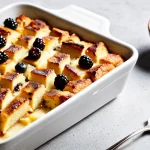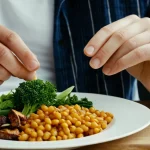Essential Foundations for a Perfect Sunday Roast
Building a traditional Sunday roast that delights every guest starts long before the meat hits the oven. The foundation lies in selecting quality ingredients, using the right equipment, and understanding the best preparation methods to ensure consistent, flavorful results every time.
First and foremost, ingredient selection is paramount. Choosing fresh, well-sourced meats and vegetables elevates the entire roast. For the meat, look for cuts with good marbling, as this ensures tenderness and flavor. When sourcing vegetables, freshness guarantees optimal texture and taste. High-quality potatoes for roasting, crisp greens, and root vegetables all contribute to the classic roast experience.
Also read : What are the key techniques for a rich and creamy bread and butter pudding?
The tools you use set the stage for seamless preparation. Essential equipment includes a sturdy roasting tray with a rack to allow even heat circulation, a reliable meat thermometer for precise temperature control, and sharp knives for clean, safe carving. Proper prep means trimming excess fat, patting meat dry to encourage browning, and seasoning early to let flavors penetrate.
Understanding the ideal cuts of meat — whether beef, lamb, pork, or chicken — is critical. Each cut demands unique attention; for example, beef rib or sirloin suits slower roasting to maximize tenderness, while leg cuts in lamb benefit from longer cooking at moderate heat. This foundational knowledge informs your roasting strategy, ensuring the meat emerges succulent and perfectly done.
In parallel : How can you make a vegetarian version of shepherd’s pie?
Adhering to these expert tips for roasting and maintaining a disciplined approach to classic roast preparation lays the groundwork for a memorable Sunday roast that satisfies both traditionalists and newcomers alike.
Mastering Meat Selection, Seasoning, and Preparation
Selecting the appropriate cut is fundamental for an exceptional meat selection for Sunday roast. Beef rib or sirloin provide rich marbling ideal for tender, flavorful results, while leg cuts in lamb are prized for their balance of tenderness and robustness. Pork shoulder offers succulent juiciness with the right cooking, and whole chickens benefit from balanced seasoning and even roasting. Knowing these distinctions streamlines roast preparation tips by matching the cut to the cooking method.
Meat seasoning techniques are crucial to unlocking the full flavor potential. Dry rubs incorporating herbs like rosemary and thyme, salt crystals for moisture retention, and freshly cracked pepper enhance the crust and internal taste. Marinating tougher cuts overnight with acidic components such as vinegar or citrus breaks down connective tissue, providing deeper flavor and tenderness. For instance, a classic Sunday roast lamb benefits greatly from garlic and rosemary-infused oil applied well in advance.
Prior to cooking, preparation steps like trimming excess fat, extensively patting the meat dry to promote Maillard browning, and carefully trussing ensure even cooking throughout the joint. Trussing ties the meat evenly, preventing uneven heat exposure and drying out. Adopting these roast preparation tips, including proper seasoning and trussing, results in a consistently juicy and tender Sunday roast that honors tradition while showcasing expert technique.
Cooking Times, Temperatures, and Techniques
Mastering Sunday roast cooking times hinges on accurately calculating based on the meat’s weight and type. For example, a beef rib joint typically requires about 20 minutes per 500 grams for medium-rare, whereas a whole chicken needs roughly 20 minutes per 500 grams plus an additional 20 minutes. Precise timing ensures meat is cooked thoroughly but remains tender and juicy.
Controlling oven temperature is equally vital. An oven temperature guide recommends starting with a high heat, often around 220°C (425°F), to sear the meat and develop a flavorful crust. After 15 to 20 minutes, reducing the heat to 160–180°C (320–350°F) allows even cooking internally without drying out the roast. This two-stage roasting method balances browning and tenderness.
Employing specific roasting methods like basting helps maintain moistness. Periodically spooning pan juices over the meat enhances flavor and prevents drying. Additionally, turning larger joints midway may promote even cooking, although this depends on the cut and oven type. Finally, resting the roast for at least 15 minutes after cooking is crucial; it lets juices redistribute, resulting in succulent, tender meat when carved.
By carefully applying these cooking times, temperature adjustments, and techniques, you ensure your Sunday roast consistently delivers excellent taste and texture, satisfying traditional expectations and showcasing expert precision.






